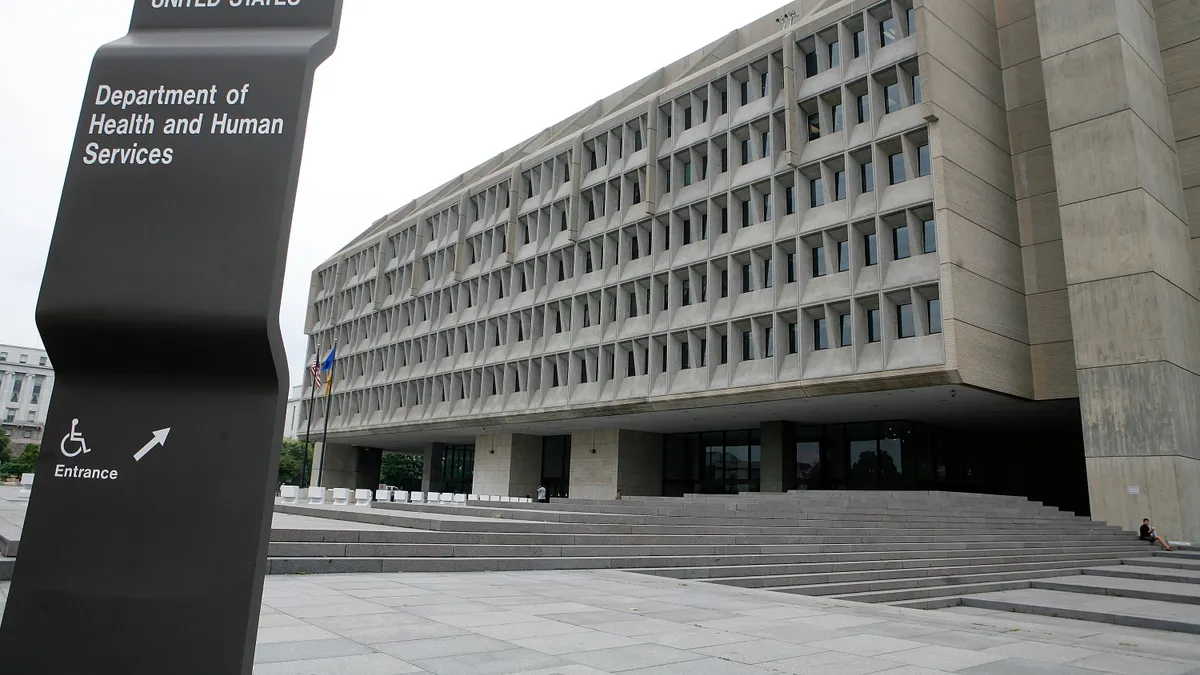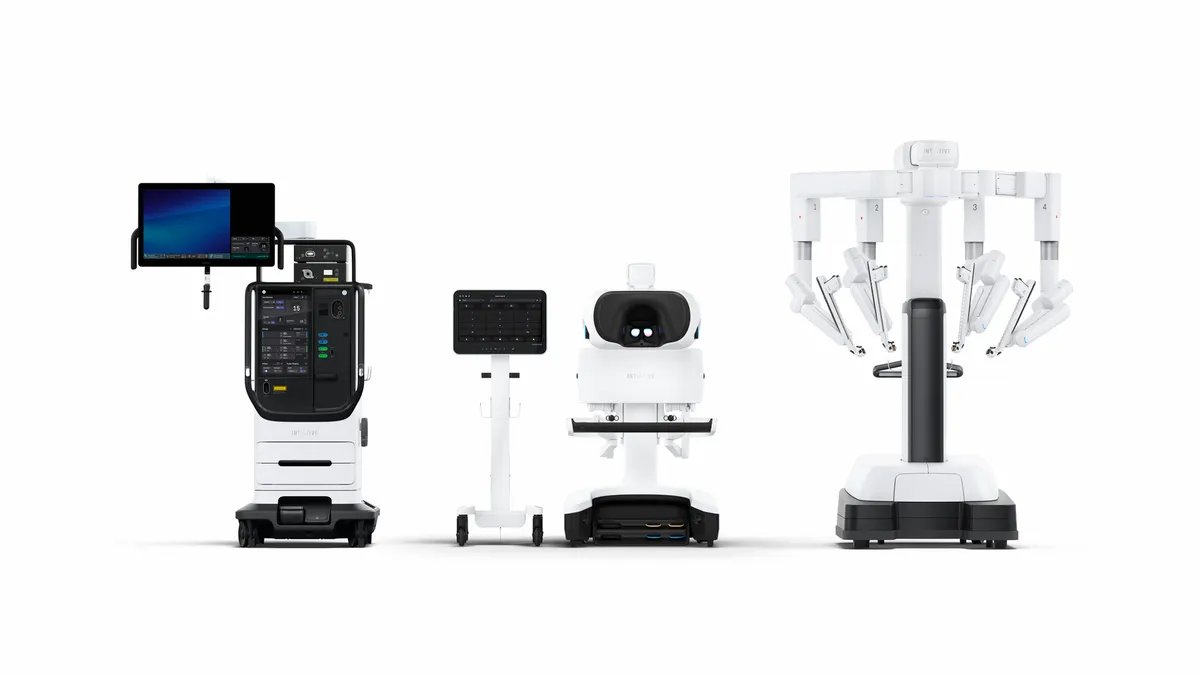In its sweeping 2021 payment rule, the Trump administration locked in a number of permanent expansions to the telehealth services Medicare covers and significantly increased payments for evaluation and management (E/M) visits beginning in 2021.
Broadly, the changes benefit general medicine at the expense of specialty providers.
Medical groups spoke out against the cuts to pay of many specialties in the physician fee schedule released late Tuesday, arguing they could be disastrous for providers if 2021 sees a continuation of the rising expenses and declining revenue that's defined 2020 during the COVID-19 pandemic.
For its part, telehealth was a relatively niche modality for care delivery before the coronavirus pandemic reached U.S. shores, but has seen skyrocketing utilization this year. The Trump administration in March first allowed fee-for-service Medicare to widely reimburse for telehealth services, and has spent the year looking into what treatments and procedures should still be allowed to be delivered virtually once the crisis has passed.
Before the public health emergency was declared in March, only 15,000 traditional Medicare beneficiaries used a Medicare telehealth service each week. However, between the middle of March and the middle of October, more than 24.5 million beneficiaries — more than a third of fee-for-service Medicare recipients — used virtual care, CMS said.
The agency has added 144 telehealth services this year temporarily covered by Medicare during the emergency. Tuesday's final rule codifies nine permanently, such as group psychotherapy, some home visits for an established patient and care planning services.
CMS is also adding 59 other telehealth services that will be allowed through the calendar year in which the public health emergency expires, to give doctors a chance to deliver them and test efficacy before CMS decides whether to permanently allow them.
Those include some emergency department visits, physical therapy and neonatal care.
However, the new additions only apply to patients in rural areas in a medical facility, such as a nursing home or hospital. Medicare doesn't have the statutory authority to reimburse for telehealth permanently for beneficiaries outside of rural areas, or generally let patients receive telehealth in the home, due to geographic and originating site restrictions legislated in the Social Security Act.
Telehealth enjoys bipartisan support in Washington, but it's uncertain if and when Congress will issue legislation overturning the restrictions.
In the final rule, regulators also established payment on an interim final basis for a short audio-only telephone E/M conversation to determine whether or not a patient requires an in-person visit. It's a small step for proponents of audio-only services, but likely to cheer providers.
CMS started allowing reimbursement for telephone services in March, but didn't include them in August's proposed rule. In comments on the proposal, the American Medical Association, along with other physician groups, urged CMS to continue allowing the audio-only services.
An estimated 40% of Medicare beneficiaries don't have access to a computer with internet, so many doctors have said being able to reach them via telephone — and be paid for it — during the pandemic has been crucial, both for patient continuity of care and their own bottom lines.
CMS is also commissioning a study to find new uses and opportunities for telehealth and remote monitoring, the agency said, and will continue evaluating whether more virtual care services should be added to the massive payer program in the future.
'Unconscionable' specialty payment cuts
The final payment schedule was issued on relatively short notice, going into effect in a little under a month. But in it, CMS also finalized controversial E/M payment changes providers fiercely opposed when they were proposed in August. The changes, meant to increase reimbursement for doctors who spend more time with patients, increase the value of services similar to E/M office visits like maternity care bundles, ER visits and end-stage renal disease capitated payment bundles, CMS said.
The agency finalized the conversion factor, a metric translating the relative value of healthcare services to payments, at $32.41, a decrease of $3.68 from 2020's conversion factor of $36.09. That's a more than 10% drop, but slightly better than the initial conversion rate proposed in August of $32.26.
CMS Administrator Seema Verma said it was the most significant update to E/M codes in three decades. But surgical groups, facing slashed reimbursement, lashed out against the change, saying it would harm patients and further destabilize the U.S. healthcare system during a time of historic volatility.
"This rule was a dangerous policy even before the pandemic, and enacting it during the worst health care crisis in a century is unconscionable," John Wilson, president of the American Association of Neurological Surgeons, said in a Tuesday statement issued by the Surgical Care Coalition, which also includes the American College of Surgeons, the Society for Vascular Surgery, the American Academy of Ophthalmology and others.
The rule will result in higher rates for specialties such as endocrinology (up 16%), rheumatology (up 15%), hematology and oncology (up 14%), family practice (up 13%), allergy and immunology (up 9%) and general practice (up 7%).
However, these increases are offset by rate decreases in specialties such as general surgery (down 6%), thoracic surgery (down 8%), cardiac surgery (down 8%), interventional radiology (down 8%), physical and occupational therapy (down 9%) and radiology (down 10%), Credit Suisse analysts said.
"These cuts will hurt all Medicare patients, particularly those seeking care for COVID-19 critical care and hospital visits that will be reduced dramatically," Susan Bailey, president of the American Medical Association, said in a statement. "For this reason, the AMA strongly urges Congress to prevent or postpone the payment reductions resulting from Medicare’s budget neutrality requirement."
A bipartisan bill introduced in the House of Representatives in October, called the "Holding Providers Harmless From Medicare Cuts During COVID-19 Act of 2020," would delay the cuts for two years. However, it's unlikely Congress will step in before the rule kicks into gear Jan. 1.
And in its comments on the proposed rule, the Medicare Payment Advisory Commission noted the payment changes could actually improve access, as the current fee schedule overvalues most procedures and undervalues E/M. By increasing the value of E/M visits relative to others, CMS will "help remedy several years of passive devaluation of these services," the group wrote.
In the final rule, CMS also tweaked coding and documentation requirements for Medicare billing, changes that are expected to save providers 2.3 million hours annually, the agency said. The final rule also makes permanent flexibilities CMS enacted on a temporary basis this year allowing non-physician practitioners to provide a greater scope of care. Nurse practitioners and physician assistants will now be able to supervise diagnostic tests, if state law allows, starting next year.
Similarly, physical and occupational therapists can hand off some ongoing therapeutic care to a therapy assistant, while physical and occupational therapists, speech-language pathologists and other clinicians who directly bill Medicare can review and verify information in a patient's medical record, instead of having to re-enter it.
The final regulation also gives accountable care organizations in the Medicare Shared Savings Program automatic full credit for patient experience of care surveys in 2020 and aligns reporting requirements in both tracks of its Quality Payment Program beginning Jan. 1 to provide ACOs some relief during the pandemic, CMS said.























